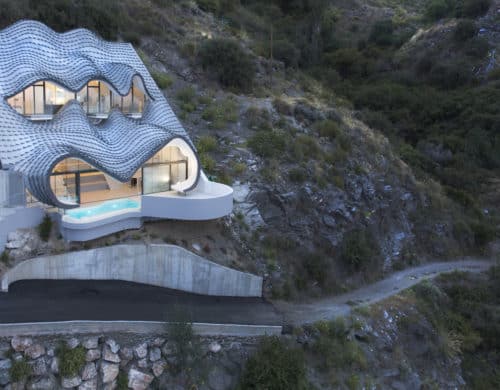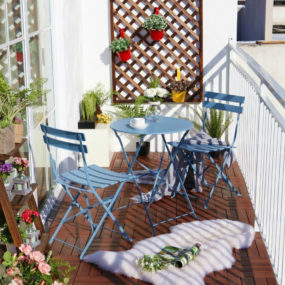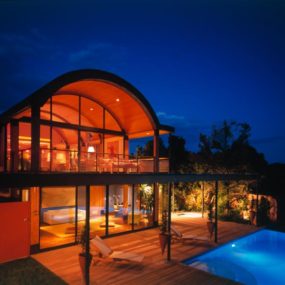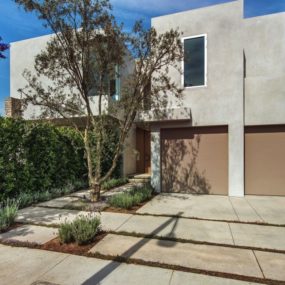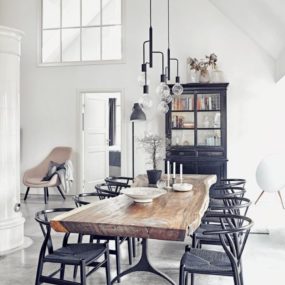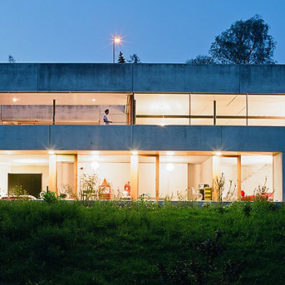
Designed by TYIN tegnestue Arkitekter, this Norwegian home addition completely transforms the dwelling it’s attached to without actually changing any of the original structure’s visual cues. Added to the front left corner of the residence, this pine-lined living space towers nearly a full story above its master building, standing out with unconventional angles and a distinctive color palette. Inside, plywood lines the walls and a fresh open design creates a living room that would be impossible to reproduce so spectacularly within the original midcentury house. While unique and modern, the addition also honors tradition, with a generally conventional shape found within its odd angular profile. With some landscaping changes, the new portion of the house is integrated attractively into the lot, and the boundary of its entryway lines up with the lines of the original home. Though unmistakably contemporary, this addition is elegant and comfortable as a living space.
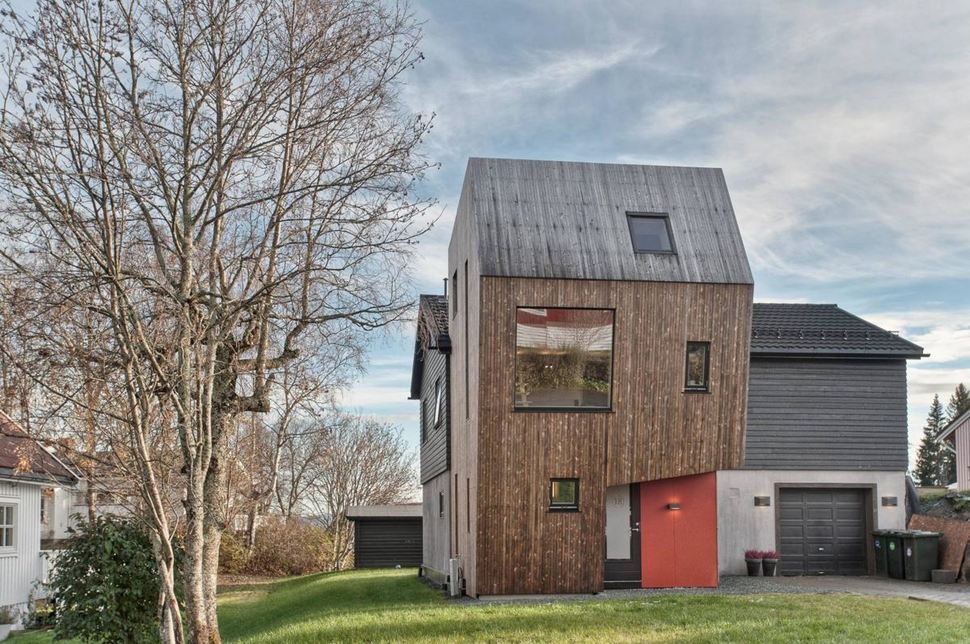
The architects chose to design an addition that redefined the original home in a distinctive manner without disrespecting its suburban residential origins. The resulting structure has a more contemporary finish and profile from the main house, but isn’t visually jarring or intentionally unlivable.
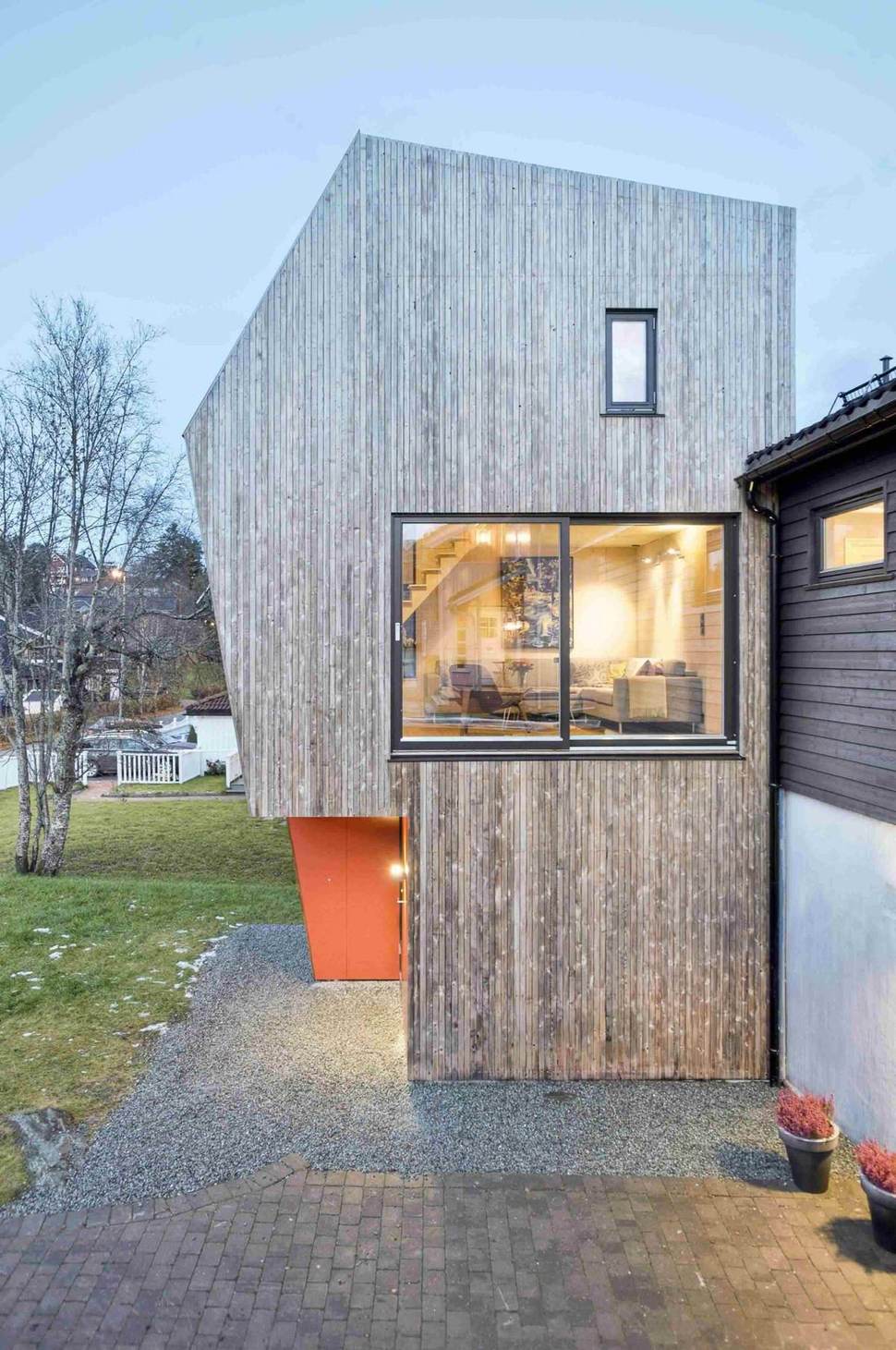
A true addition, the new living module uses a completely separate structure from its master dwelling, jutting out independently of the midcentury dwelling. However, the overall angles of the new space suggest a modernized version of conventional residential architecture, with a peaked roof and sheltered doorway.
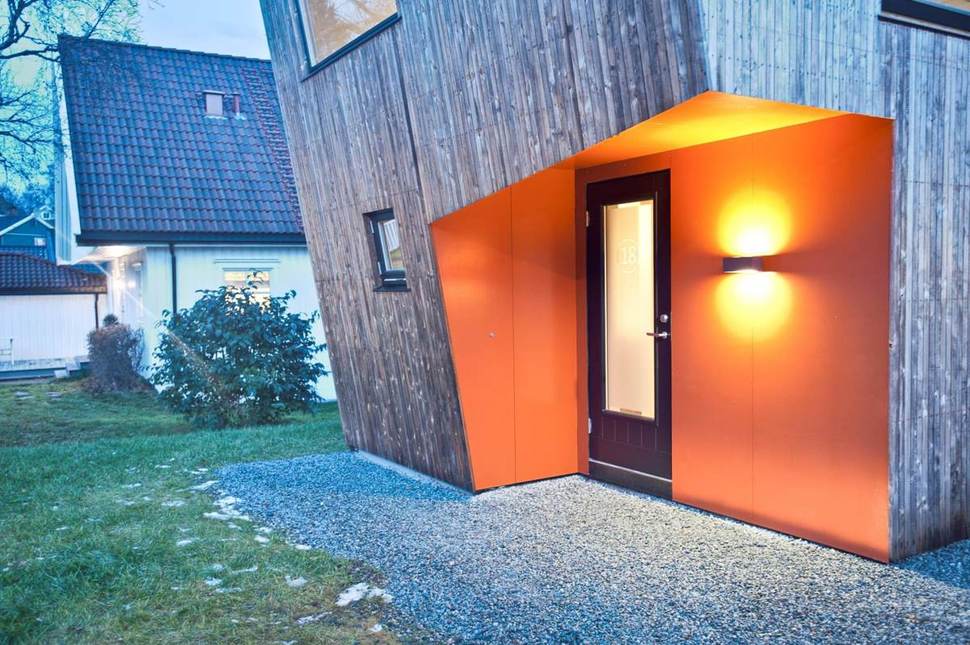
The entry area exhibits the distorted angles of the addition in their most closely-packed form, accented further by smooth orange walls. A pebbled walkway has been extended from the driveway as a rectangular frame around the bottom of the structure.
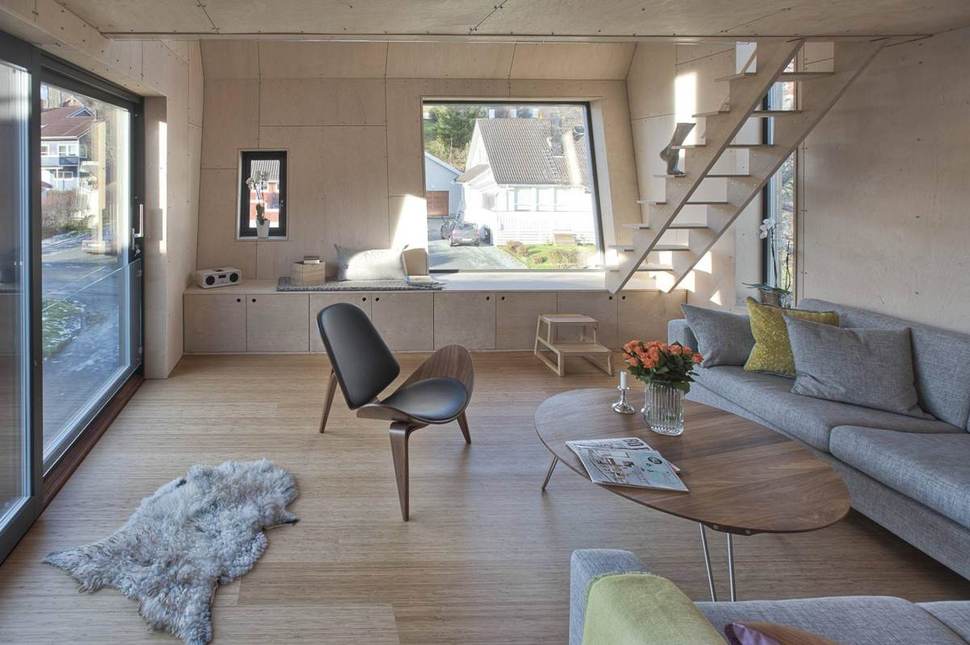
Inside, all the walls of the living space are lined in smoothed plywood, and most furniture and structure of the room also exhibits wooden construction. Along outwardly-sloped walls, a set of cabinets is mounted low to create a long bench as well.
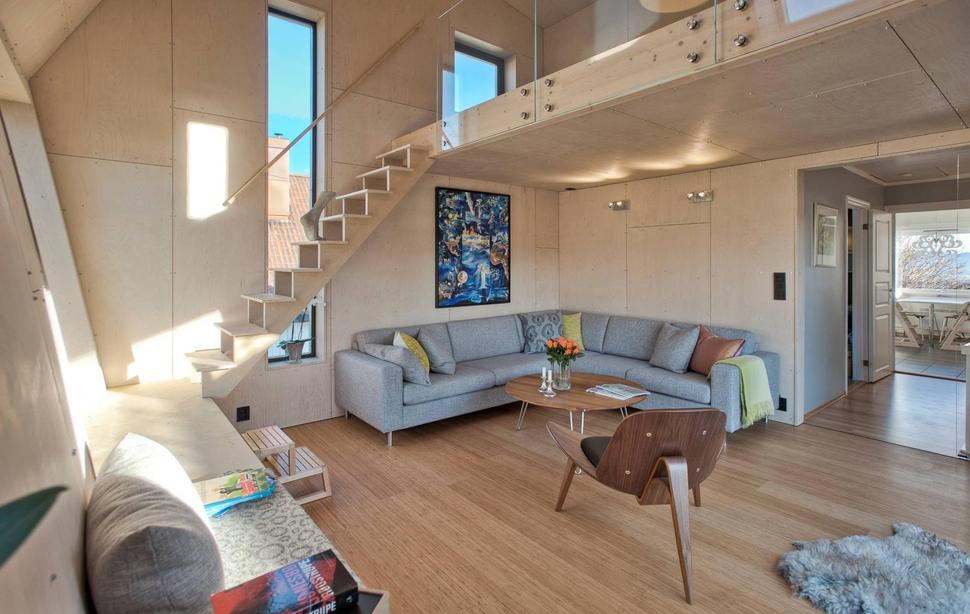
Though the addition is technically composed of two different rooms, the second one is simply a loft situated on a wide balcony over the main living space. Saving space, residents must first climb steps to the cabinet benches to ascend the flight upward to the loft.
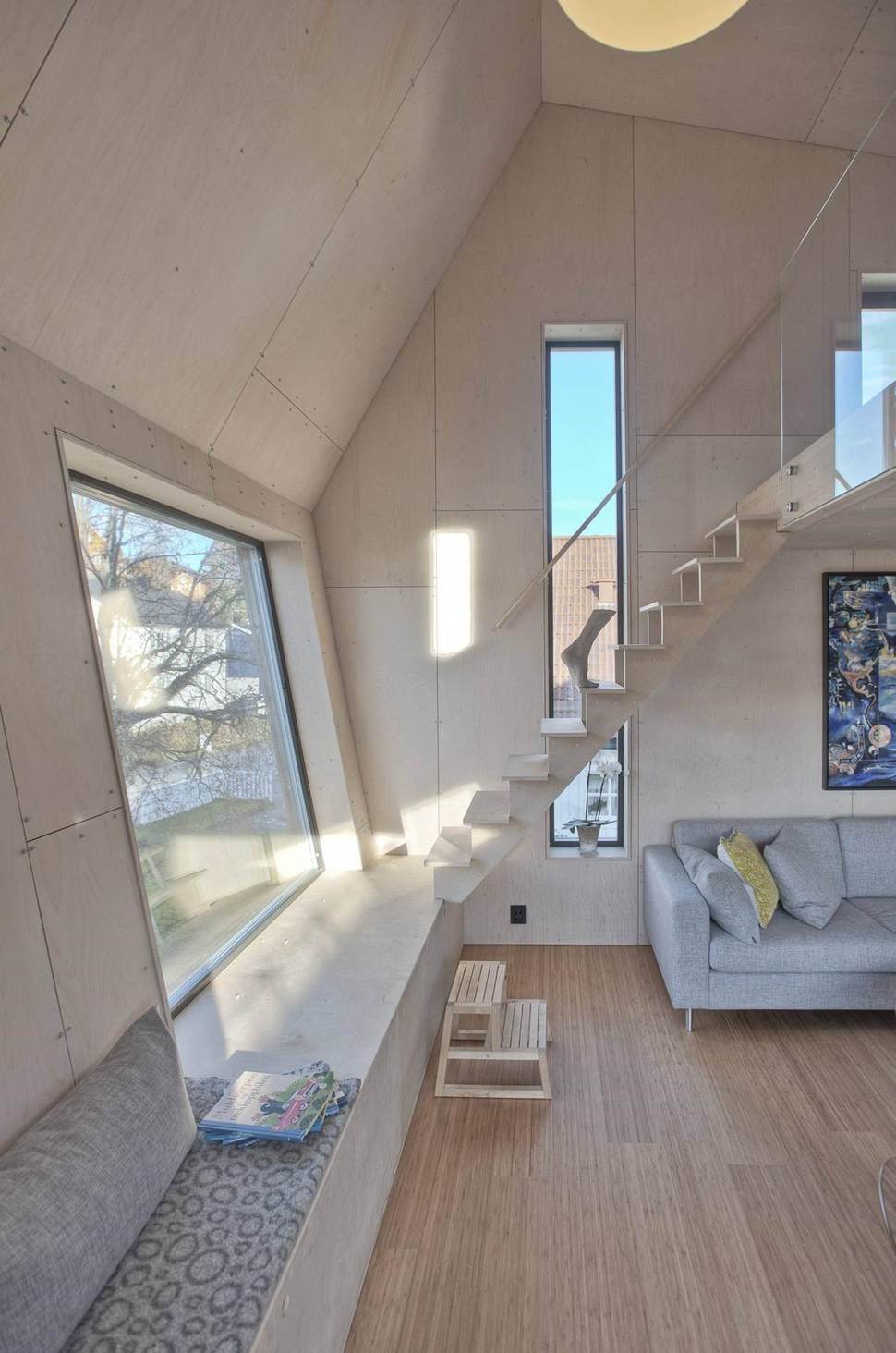
A variety of windows are utilized within the addition, all rectangular. Two sets of tall and wide windows along perpendicular edges combine with a skylight overhead to bring in the most light, while various thinner openings provide accent light and localized illumination for certain parts of the space.
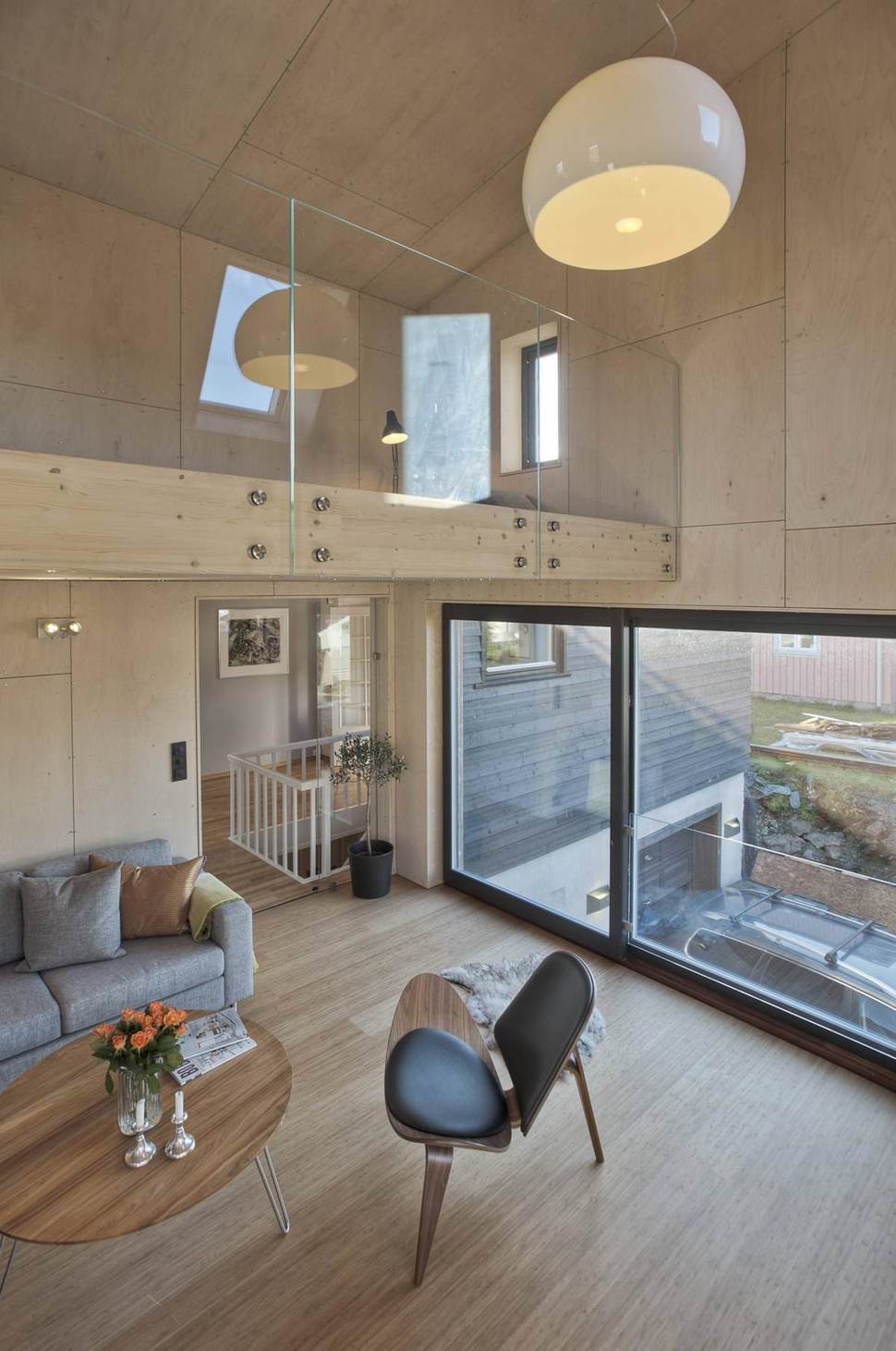
The top-level balcony is all glass, further uniting the children’s play area at the top with the more general living room below it. At the edge of the main house in the corner of the room, you can see where steps come up from the entry and storage rooms on the ground floor.
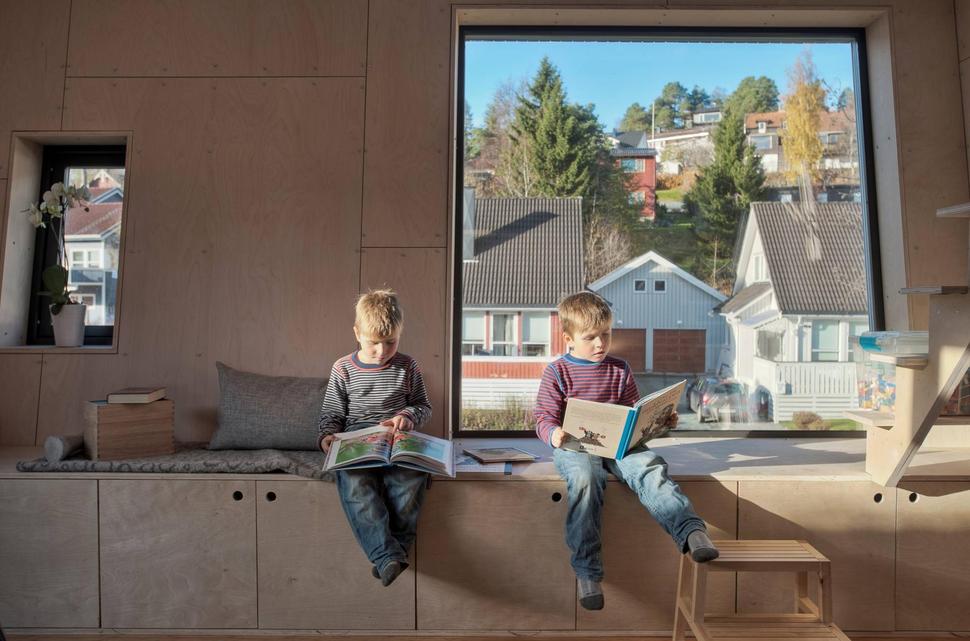
The storage bench along the front wall of the addition can provide seating for a large number of people in addition to the more formal seating on the room’s standalone furniture, helping to make this addition a perfect gathering space for any number of residents and guests.

Each window is recessed into the wall somewhat, allowing for certain paned to be angled differently along a single wall. The windows which stand straight up can be used as shelving space, too, for accent pieces.
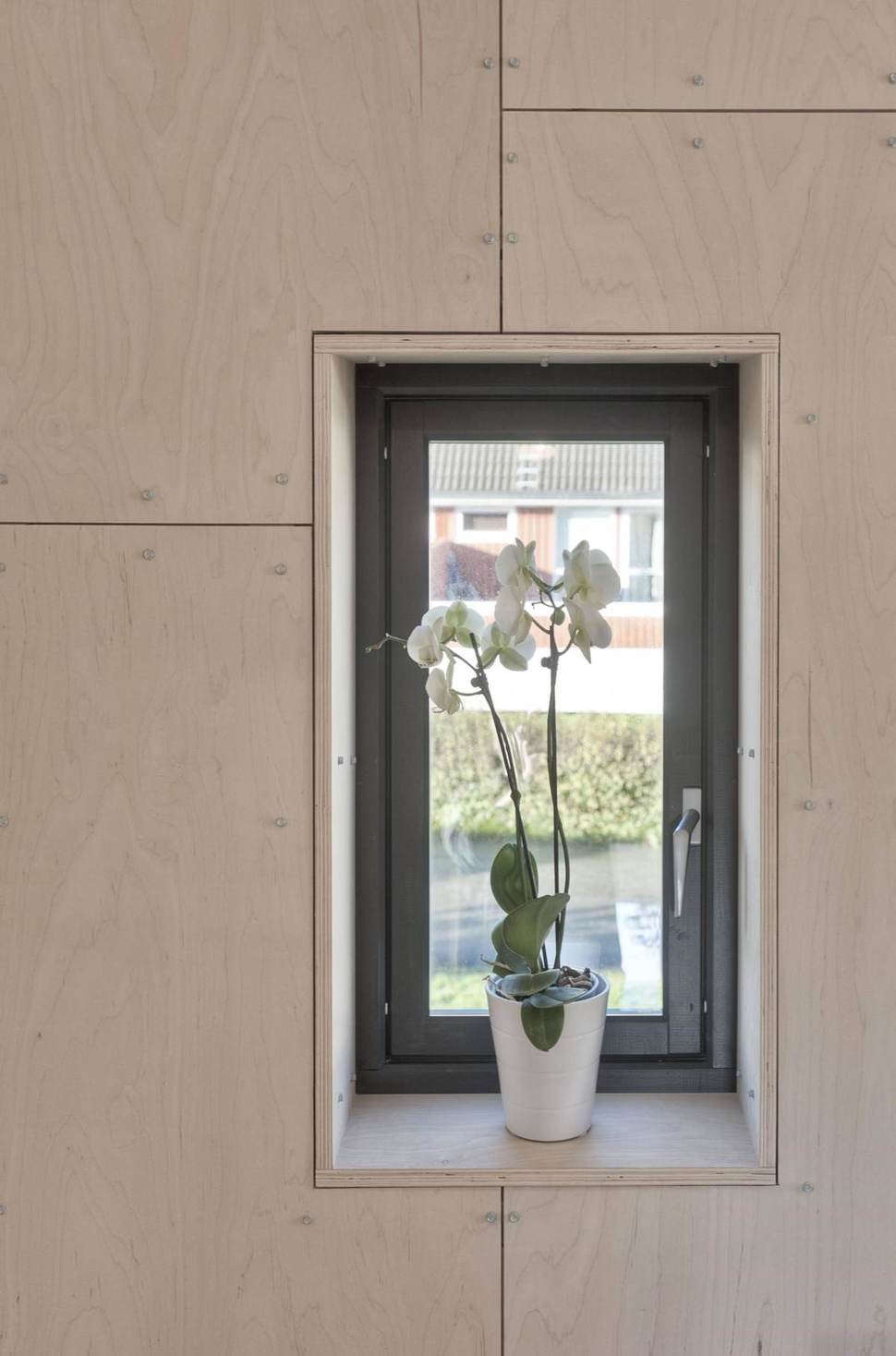
The two smallest windows of the addition, one on each floor, can be opened to allow a breeze of fresh air inside to offset the heat from the sun during summer without relying too much on artificial means of cooling.
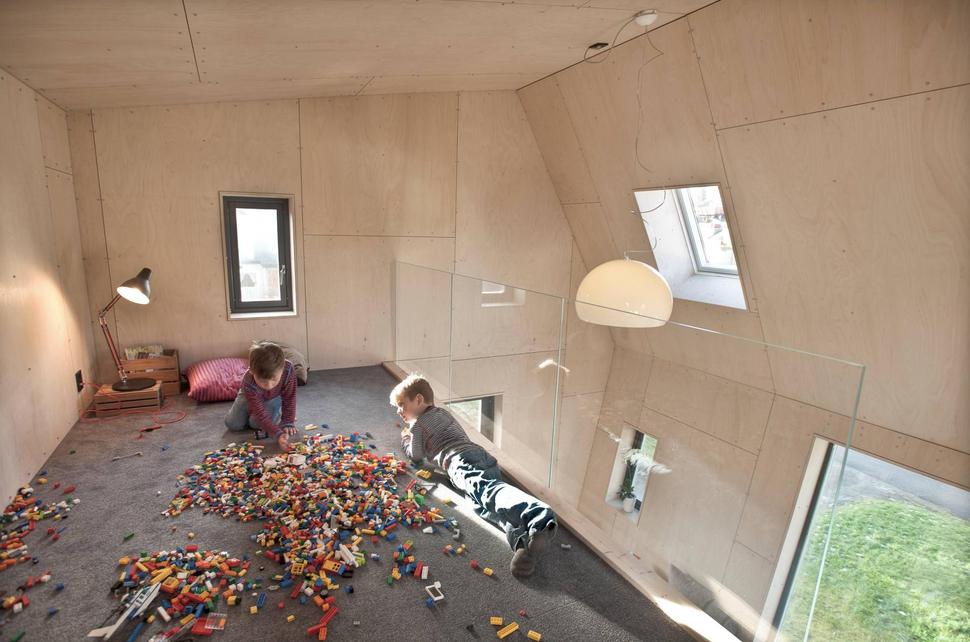
The balcony up top is kept as unstructured as possible, leaving plenty of space for children to play in. The area’s height and the inclusion of carpeting instead of hardwood flooring helps in its use as a playroom, whiel its open-air nature allows adults to keep tabs on what’s happening above their heads.
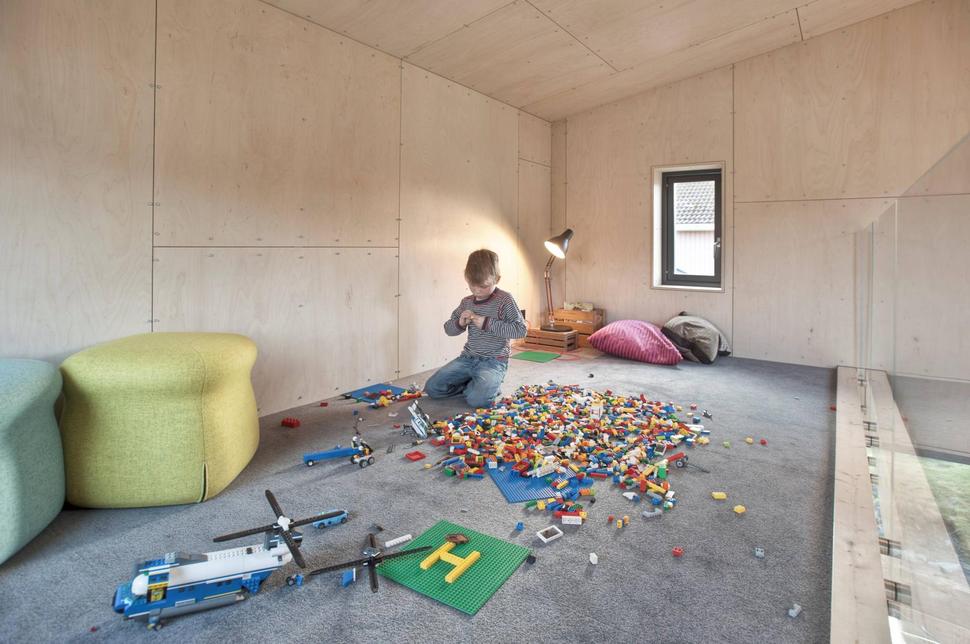
The carpeting here keeps kids from getting splinters while building, while a few cushioned contemporary stools give them rest when need be.
TYIN tegnestue Arkitekter
